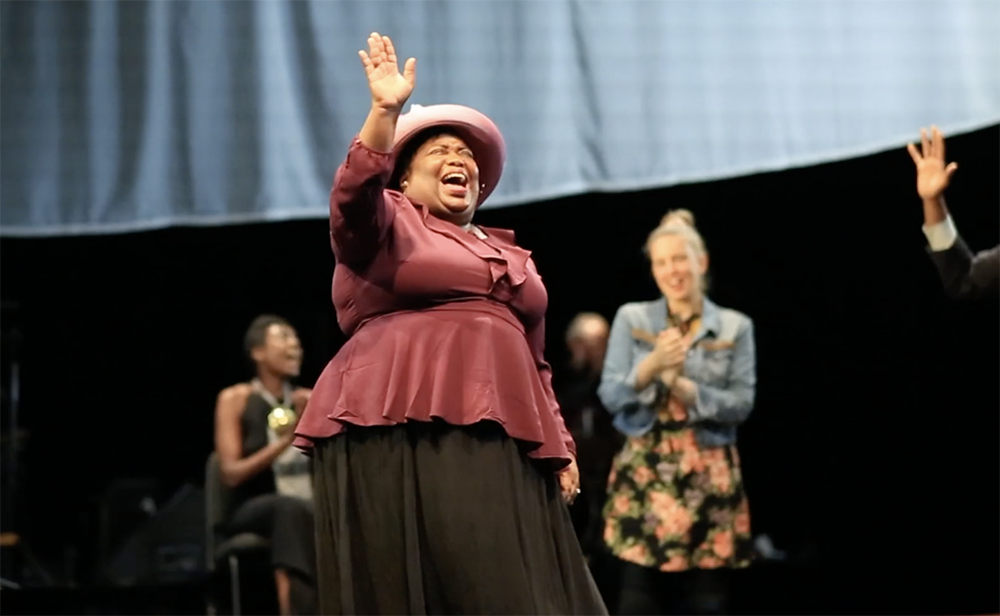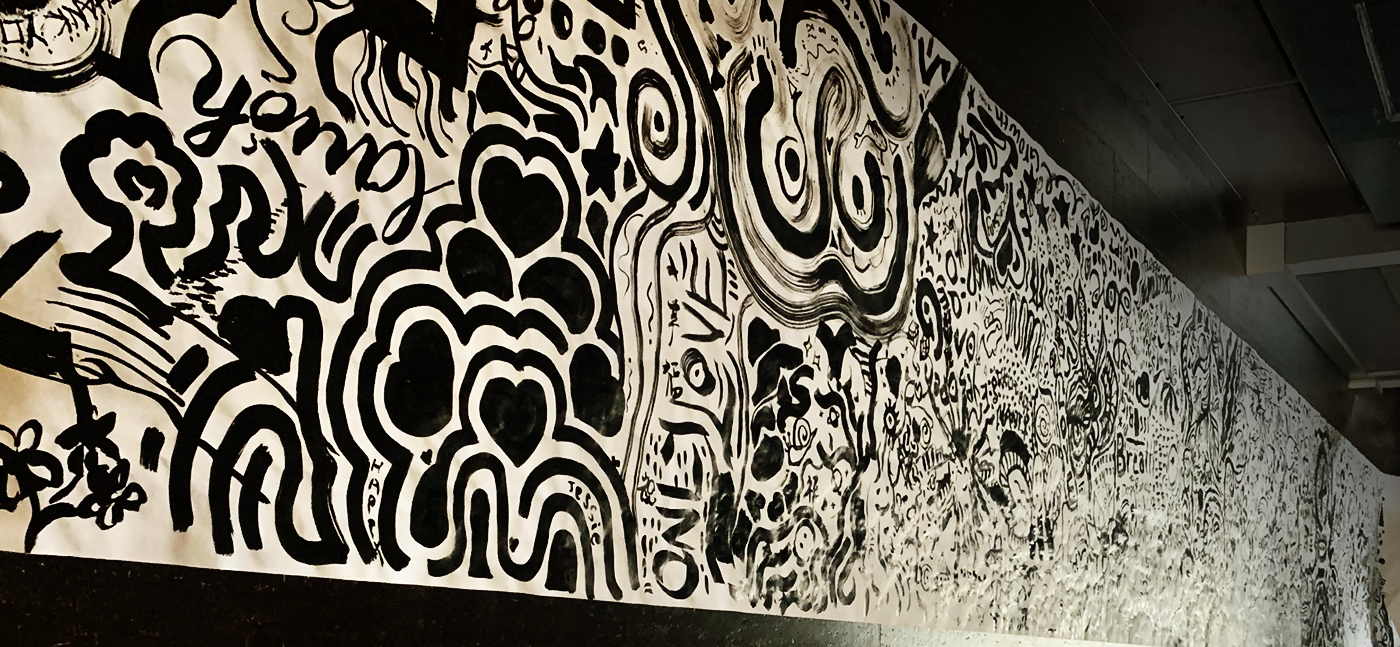7 April 2023
Hello dear people,
This is Marc writing. It has been a little over two weeks since the last update. Here’s the news.
Now less shitty!
Our previous update contained this sentence: ““I’m feeling really, really, really shitty in this time. The weakest I’ve ever felt.” This was the result of several combined factors, which continued and then then got better. There has been more time since Covid and the stomach bug. Hanna is making adjustments in medication and tweaking her approach to eating. All that helped. She is feeling MUCH better overall than two weeks ago.
A bounty of resources, care, and government forms
The ALS clinic connected us with their team, and that array of help is really kicking in. There are many kinds of federal and state assistance, the local chapter of the ALS Association is active and generous, and the many specialists connected with the clinic are wonderfully supportive. (As are YOU. Thank you for the continuing flow of care and generosity.)
The clinic’s social worker is hooking Hanna up with an amazing list of resources. But for most of them, especially the government ones, you don’t just knock on their door. No, you fill out fooooooorms. Happily the social worker also connected us to free legal services. Still there’s plenty to satisfy the hungriest appetite for typing in little boxes and divining the meaning of fine print. Bounty!
Pulmonologists are angels
This week Hanna had her first visit to the sleep and breathing center at UPMC. When we talked to them before the visit, they seemed excited to show us what they called their “toys.” Hanna had mentioned she struggles with having enough energy during the day. They said, “Let’s see what we can do about that.”
Hanna got to experience a ventilator, which is basically a more capable cousin of the CPAP machines used by people with sleep apnea. She tried different masks, was able to spend time on a bed trying different positions, and experienced different settings. She gave it two thumbs up and a big smile.
Here’s the thing: weakened chest muscles mean shallower breaths, and that’s especially true at night when we’re all at our weakest. Shallower breaths means lower blood oxygen, and all that contributes to a poorer harvest from a night’s sleep. Result: less daytime energy. This will improve that.
AND… and and and… this machine can be battery-powered, and it fits in a backpack, and there is an attachment that’s a tube you use like a pressurized air-cigar, which means Hanna can have better breathing while walking or riding a bike. That is a yahtzee.
There were other devices to try, including a kind of atmospheric Pushme-Pullyou that basically provides physical therapy for the lungs. There were fully-filled lungs and puffed-out cheeks, and there was much laughter there in the sleep lab. Hanna will receive these new tools as early as next week (pending insurance approval and co-pays). Those pulmonologists are jolly angels.
The punchline for me was when Hanna said this: “This is the first time I’ve felt hopeful since the diagnosis.”
Wait, where are we with the diagnosis?
When we last updated you the ALS specialist had said he believed “This is ALS, 90%.” Then he ordered an MRI scan that highlights evidence of autoimmune disease. That scan has happened, and we have the very technical version of the results. From that dense language we can glean that what the scan saw is “in support of” the ALS diagnosis. But we do not have the doctor’s interpretation of those results, and understand it may be several weeks before we do. Because doctor stuff.
I spoke with Hanna about this, and her perspective is that we essentially do have a diagnosis. Whatever the final report from the MRI, it’s not going to be some kind of saving surprise. In Hanna’s words, “There is no ticket out.”
That has been the mode and mood for Hanna and her circle of care. This is ALS. Life awaits. Let’s go.
Life’s many joys
Hanna went with friends to see The Parable of the Sower at Pittsburgh Playhouse.

There was a nighttime expedition to “Salamander Park” to listen to the spring peepers. They sounded like this:
People come to visit, and clean, and take care, and just be. More angels.
Erika (I think it was Erika) gave Hanna the gift of a jar of tadpoles, which sits on the stand beside her bed. They are very cute. They swim, they eat, and to my surprise they have lips like fashion models.
Oh, and our students in the SVA Design for Social Innovation program in New York got together and made Hanna an amazing tapestry using sumi-e ink. Someone called it an “honor scroll.” Indeed.

Yes, there is daily joy.
Thank you
Thank you all, as always, for your good presence and care. It’s lovely to see this fabric of connections that has been weaving around Hanna. I guess that has always been true about life, but is more evident because of this challenge: we are a fabric.
Marc
For lagniappe, here’s an essay by the poet David Whyte on heartbreak. Whyte has a gift for revealing the generous layer under what we usually try to avoid or “get over.”
Heartbreak
by David Whyte, from Consolations
Heartbreak is unpreventable; the natural outcome of caring for people and things over which we have no control, of holding in our affections those who inevitably move beyond our line of sight.
Heartbreak begins the moment we are asked to let go but cannot. In other words it colors and inhabits and magnifies each and every day; heartbreak is not a visitation, but a path that human beings follow through even the most average life. Heartbreak is an indication of our sincerity: in a love relationship, in a life’s work, in trying to learn a musical instrument, in the attempt to shape a better more generous self. Heartbreak is the beautifully helpless side of love and affection and is just as much an essence and emblem of care as the spiritual athlete’s quick but abstract ability to let go. Heartbreak has its own way of inhabiting time and its own beautiful and trying patience in coming and going.
Heartbreak is how we mature; yet we use the word heartbreak as if it only occurs when things have gone wrong: an unrequited love, a shattered dream, a child lost before their time. Heartbreak, we hope, is something we hope we can avoid; something to guard against, a chasm to be carefully looked for and then walked around; the hope is to find a way to place our feet where the elemental forces of life will keep us in the manner to which we want to be accustomed and which will keep us from the losses that all other human beings have experienced without exception since the beginning of conscious time. But heartbreak may be the very essence of being human, of being on the journey from here to there, and of coming to care deeply for what we find along the way.
Our hope to circumvent heartbreak in adulthood is beautifully and ironically child-like; heartbreak is as inescapable and inevitable as breathing, a part and a parcel of every path, asking for its due in every sincere course an individual takes, it may be that there may be not only no real life without the raw revelation of heartbreak, but no single path we can take within a life that will allow us to escape without having that imaginative organ we call the heart broken by what it holds and then has to let go.
In a sobering physical sense, every heart does eventually break, as the precipitating reason for death or because the rest of the body has given up before it and can no longer sustain its steady beat, but hearts also break in an imaginative and psychological sense: there is almost no path a human being can follow that does not lead to heartbreak. A marriage, a committed vow to another, even in the most settled, loving relationship, will always break our hearts at one time or another; a successful marriage has often had its heart broken many times just in order for the couple to stay together; parenthood, no matter the sincerity of our love for a child, will always break the mold of our motherly or fatherly hopes, a good work seriously taken will often take everything we have and still leave us wanting; and finally even the most self compassionate, self examination should, if we are sincere, lead eventually to existential disappointment.
Realizing its inescapable nature, we can see heartbreak not as the end of the road or the cessation of hope but as the close embrace of the essence of what we have wanted or are about to lose. It is the hidden DNA of our relationship with life, outlining outer forms even when we do not feel it by the intimate physical experience generated by its absence; it can also ground us truly in whatever grief we are experiencing, set us to planting a seed with what we have left or appreciate what we have built even as we stand in its ruins.
If heartbreak is inevitable and inescapable, it might be asking us to look for it and make friends with it, to see it as our constant and instructive companion, and perhaps, in the depth of its impact as well as in its hindsight, and even, its own reward. Heartbreak asks us not to look for an alternative path, because there is no alternative path. It is an introduction to what we love and have loved, an inescapable and often beautiful question, something and someone that has been with us all along, asking us to be ready for the ultimate letting go.

Thank you Marc,
thank you Hanna xxx
Thank you David W.
Holding space in my heart for your precious life.
Ditto Marianne, sending a very loving light breeze to be in your sails during this unchartered daily life, Hannah and Marc, and in the sails of those jolly pulmonologists and the tadpoles and the hands filling out all those forms and the people bringing the breathing tools and the whole amazing network that’s part of Hanna’s life.
Ditto Marianne, sending a very loving light breeze to be in your sails during this unchartered daily life, Hannah and Marc, and in the sails of those jolly pulmonologists and the tadpoles and the hands filling out all those forms and the people bringing the breathing tools and the whole amazing network that’s part of Hanna’s life.
Thank you Marianne, thank you Christine.
(。ˇ ⊖ˇ)♡
An unknown voice from South Africa. A newby friend of Elsa.
I journey with you, Hanna and Marc. I thank you for sharing. And enriching my life by your godly / enlightened / otherworldly way of walking your painpath.
I salute you.